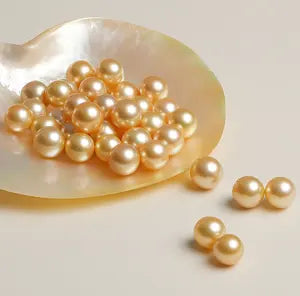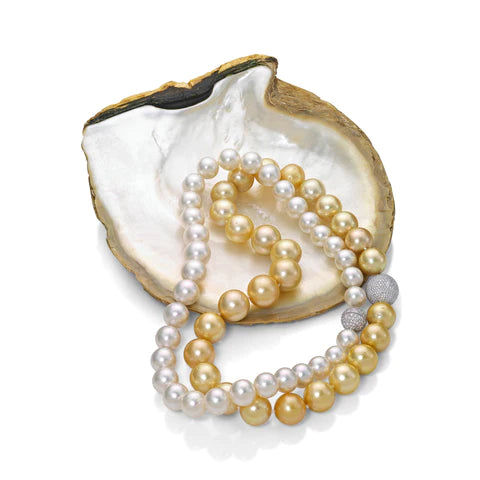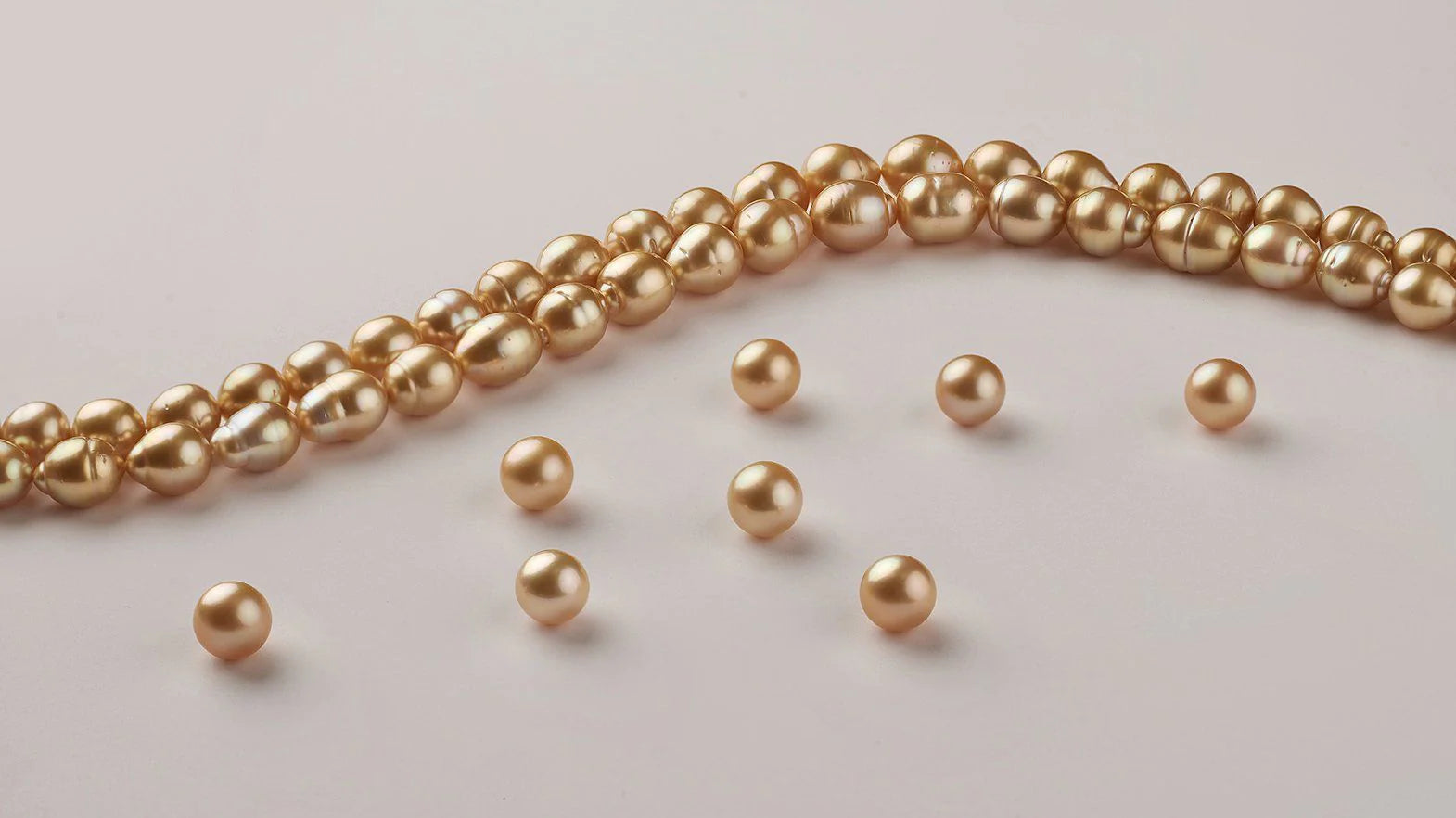Their large size, limited culturing area, and extended growth period all combine to make South Sea pearls the rarest of all pearl types. Found in colors ranging from optic white to a deep, honey gold, these pearls are prized by collectors and designers alike. The luster of South Seas pearls, whether white or golden, is soft and luxurious. Only a small percentage of South Seas are spherical and as such, full strands of matched pearls are extremely rare.

The majority of white South Sea pearls are cultured along the northwest coast of Australia. Pearls of the golden variety are also produced primarily in the Philippines and Indonesia - two countries that are quickly becoming the leaders in the finest golden South Sea pearl production.
While White South Sea pearls predominately come from Australia, golden South Sea pearls are now primarily grown in the Philippines and Indonesia, with Australia making up only a small percentage. Golden South Sea pearls are, however, typically sold on auction in cooperation with white South Sea pearl producers, and many of the auction lots will offer a mixture of both white and gold. The auctions are held several times each year in Japan and Hong Kong.

South Sea pearls can be found in the range of 8 to 20 mm, with the average being 12 mm. Although extremely rare, some pearls have been found larger than 20 mm. Silver-lipped South Sea pearl oysters generally produce pearls in the white, silver, aqua and blue family of overtones. The gold-lipped variety produces the cream, champagne, and deeper golden variety. Pearls produced by the gold-lip South Sea pearl oyster range is colors from a creamy white to a deep gold. The varying hues in between are often referred to as yellow and champagne. Each of the colors may be beautiful in their own right, but the most valuable is gold. Since the natural colors of South Sea pearls are so rich and beautiful, after harvesting they are merely washed and buffed to remove any residue and bring out their natural glow.
